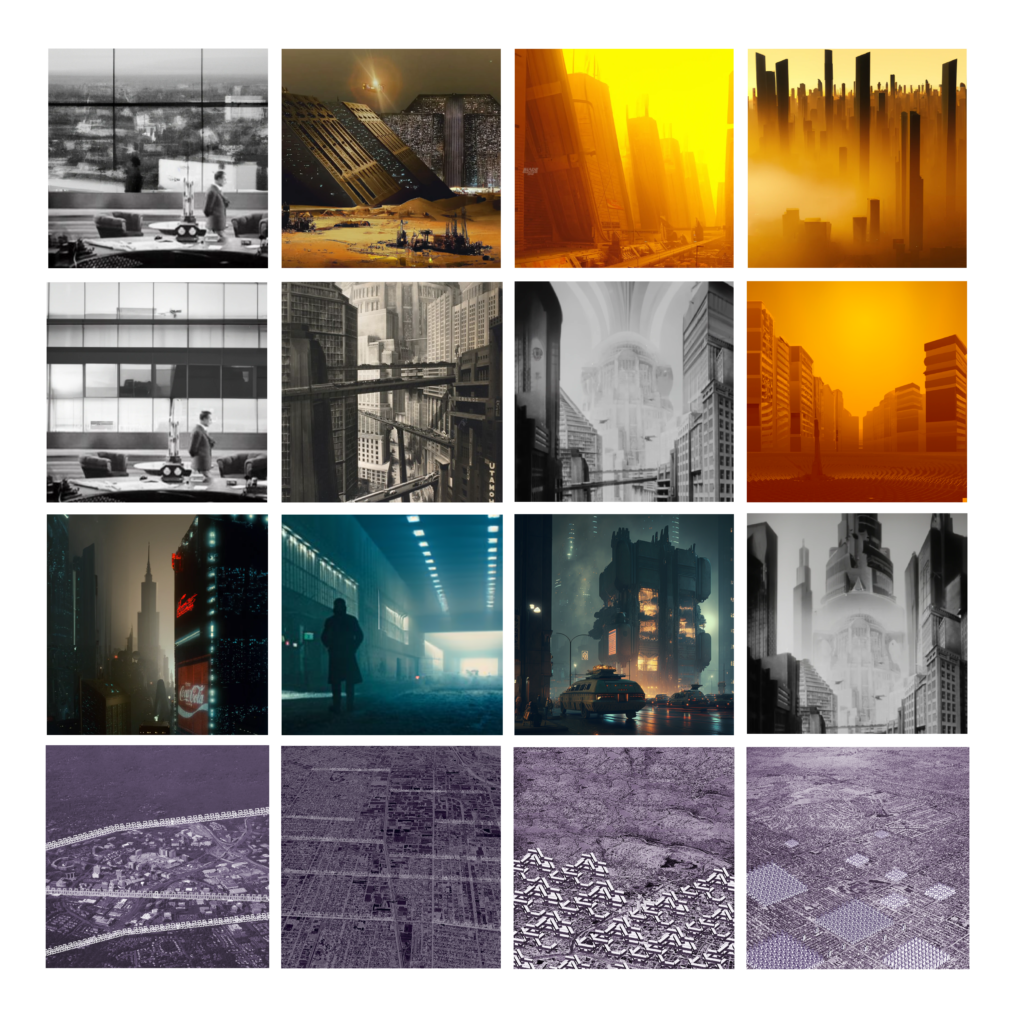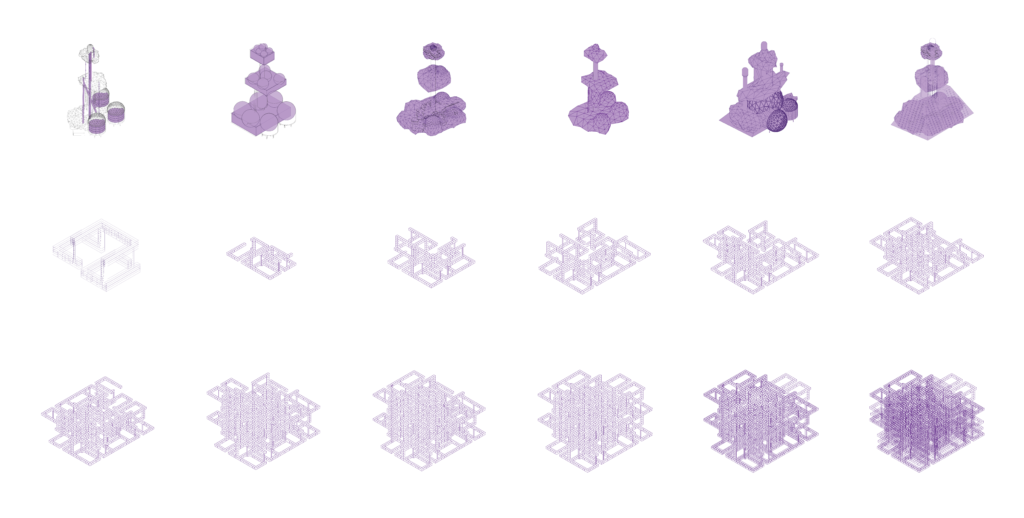A critical, speculative graphic essay in three steps
Chapter 01: Critical Analysis
A critical analysis of case studies through the lens of Kiel Moe’s ‘A Case for a More Literal Architecture.’
This project seeks to critically deconstruct the element of abstraction on an urban scale through an analysis of readings from Kiel Moe’s “A Case for a More Literal Architecture”, the film “Metropolis” and a case study of “The Interlace”. The first section seeks to cretically deconstruct the literal elements of the architectural process. The critical exploration begins with the Interlace, where an analysis of the marketing, extraction processes, and accessibility to the site are all analyzed. Followed by an exploration of The Montreal Tower, where not only the question of resources is raised but also one of waste management to dissect the dissassembly process. Finally, the project Spatial Towers is analyzed to critically approach the expansion of cities, the resources requires, and the processes of extraction as climate change increases in severity.
section I: the interlace
This section seeks to critically deconstruct
the literal elements of the architectural
process. The critical exploration begins with the
Interlace, where an analysis of the marketing,
extraction processes, and accessibility to the
site are all analyzed.


X SINGAPORE
X AUSTRALIA
X LAOS
X CAMBODIA
X THAILAND
section II: montreal tower
This section explores The Montreal Tower,
where not only the question of resources is
raised but also one of waste management to
dissect the dissassembly process.


spatial structures
Finally, the project Spatial Towers is analyzed
to critically approach the expansion of cities,
the resources requires, and the processes
of extraction as climate change increases in
severity.


Chapter 02: Vertical Imaginaries
A visual essay composed by a meta-narrative or meta-abstraction of the films and case studies, analysed through the lens of urban atmospheres.
This layer is designed to provide a timeline narrative that connects representations of urban conditions across the imaginary of different periods, including Metropolis 1927, The Montreal Tower 1963, Blade Runner 1982, Spatial Retaining Bars 1989, The Interlace 2016, and Blade Runner 2049. To unify this evocative layer, real images from the movies were curated and put through an AI Dall-e exploration process. Certain portions of the images were intentionally erased to allow the AI to complete them, and the images were also tested with intentional prompts based on the relation between the text readings, case study and film analysis. The narrative presented speculatively incorporates the imaginary urban forms that were prevalent during each historical period, as well as the prevailing ideas about what the future of cities might look like. This approach provides a perspective on the evolution of urban environments and the ways in which they have been imagined and represented throughout history. Another way to speculate this imaginaries was to provoke new scenarios made with collage from the case studies.

Chapter 03: Speculative Projections
Connecting the narratives of Rem Koolhaas: Bigness
This project seeks to focus on imagining and proposing possible futures, rather than simply responding to current needs or condition. Projective speculation are theoretical frameworks and approaches that facilitate this mode of practice and analysis of the readings from Rem koolhaas- “Bigness”. The key aspect of projective speculation models is their use of speculative design methods, such as scenario planning, extrapolation, and alternative futures analysis. These methods allow architects to imagine and explore a range of possible futures, and to create designs that are responsive to these futures. Examples of projective speculation models such as The Interlace, Montreal tower and spatial structures are explored through a new way to engage with complexity of the future and to create designs that are not simply reactive, but actively shape the future in possitive and innovative way.



